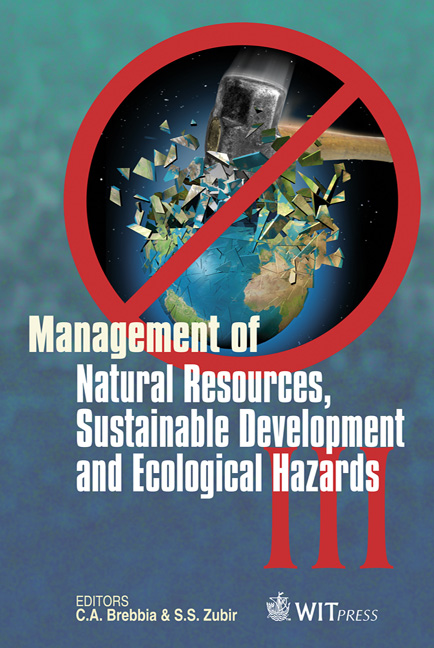Field Investigation On The Infiltrations Of Reservoir And Sea Waters In Summer Dry Season In Lebna Watershed, Tunisia
Price
Free (open access)
Transaction
Volume
148
Pages
12
Page Range
403 - 414
Published
2011
Size
4,337 kb
Paper DOI
10.2495/RAV110371
Copyright
WIT Press
Author(s)
A. Kawachi, M. Tsujimura, M. Takahashi, A. Chekirbana, J. Tarhouni, W. Yamada & H. Isoda
Abstract
A groundwater table survey, and chemical analyses of surface water and groundwater were performed in the coastal, shallow, aquifer of Lebna watershed (Cap Bon peninsula, Tunisia) in order to examine the infiltration effects of reservoir and sea waters. This was undertaken because, in this region, there is the Lebna dam reservoir, constructed to accelerate recharge of surface water and improve groundwater level depression, and seawater intrusion of the shallow aquifer, the effect has not been evaluated quantitatively yet. Measuring the groundwater level and water quality and collecting the water samples for analysis of inorganic solute ions were carried out in July 2010at 63 locations, including private wells, the river and reservoir. According to the contour map of the groundwater table, the groundwater flow from the reservoir was found in the downstream area of the reservoir only. On the other hand, the groundwater level around the estuary of the Lebna River was lower than the sea, thus seawater intrusion seemed to occur there. In addition, from the results of the chemical analyses, the spatial distribution of chloride ion concentration, which is used as a tracer, also showed that the reservoir water infiltrates the downstream area. Therefore, the effect of the reservoir water infiltration in the summer dry season was limited to the small area. Keywords: dam reservoir, coastal aquifer, seawater intrusion, infiltration, groundwater contour map, chloride.
Keywords
dam reservoir, coastal aquifer, seawater intrusion, infiltration, groundwater contour map, chloride





